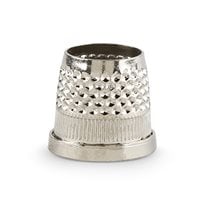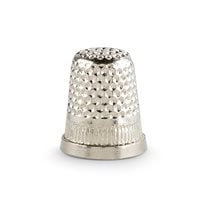Sewing Thimbles
Find Your New Favorite Thimble at WAWAK Sewing Supplies.When it comes to hand sewing, a Sewing Thimble is a sewer’s best friend—and we've got your perfect match at WAWAK Sewing Supplies. Thimbles are typically worn on the middle finger while hand sewing to push the needle through the fabric using that finger. Using a thimble for sewing protects the finger and allows you to hand sew quickly and painlessly. They're an essential accessory for everyone who does hand embroidery, mending, couture sewing, or any sewing by hand. |
Frequently Asked Questions About Sewing Thimbles
What is a thimble used for in sewing?Thimbles are worn while hand sewing to protect the finger from the pressure of the needle. It’s typically worn on the finger that pushes the needle through the fabric to allow for greater sewing speed, precision, and comfort.
What finger does a thimble go on?The thimble is typically placed on the middle finger. This allows the sewer to grasp the needle with the index finger and thumb and push the needle through the material using the middle finger. What are the different types of thimbles?We offer metal, leather, and rubber or plastic thimbles. Metal thimbles are the strongest, and great for heavy materials. Leather thimbles are strong and will conform to the shape of your finger over time. Plastic thimbles are the lightest option, and good for lighter materials that don’t require as much force to puncture. |



